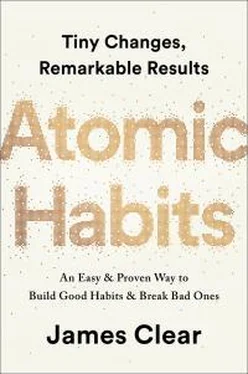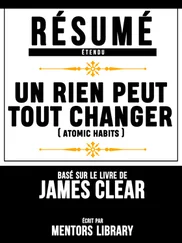In an article published in the New Yorker titled “Better All the Time,” James Suroweicki writes:
“Japanese firms emphasized what came to be known as ‘lean production,’ relentlessly looking to remove waste of all kinds from the production process, down to redesigning workspaces, so workers didn’t have to waste time twisting and turning to reach their tools. The result was that Japanese factories were more efficient and Japanese products were more reliable than American ones. In 1974, service calls for American-made color televisions were five times as common as for Japanese televisions. By 1979, it took American workers three times as long to assemble their sets.”
I like to refer to this strategy as addition by subtraction .* The Japanese companies looked for every point of friction in the manufacturing process and eliminated it. As they subtracted wasted effort, they added customers and revenue. Similarly, when we remove the points of friction that sap our time and energy, we can achieve more with less effort. (This is one reason tidying up can feel so good: we are simultaneously moving forward and lightening the cognitive load our environment places on us.)
If you look at the most habit-forming products, you’ll notice that one of the things these goods and services do best is remove little bits of friction from your life. Meal delivery services reduce the friction of shopping for groceries. Dating apps reduce the friction of making social introductions. Ride-sharing services reduce the friction of getting across town. Text messaging reduces the friction of sending a letter in the mail.
Like a Japanese television manufacturer redesigning their workspace to reduce wasted motion, successful companies design their products to automate, eliminate, or simplify as many steps as possible. They reduce the number of fields on each form. They pare down the number of clicks required to create an account. They deliver their products with easy-to-understand directions or ask their customers to make fewer choices.
When the first voice-activated speakers were released—products like Google Home, Amazon Echo, and Apple HomePod—I asked a friend what he liked about the product he had purchased. He said it was just easier to say “Play some country music” than to pull out his phone, open the music app, and pick a playlist. Of course, just a few years earlier, having unlimited access to music in your pocket was a remarkably frictionless behavior compared to driving to the store and buying a CD. Business is a never-ending quest to deliver the same result in an easier fashion.
Similar strategies have been used effectively by governments. When the British government wanted to increase tax collection rates, they switched from sending citizens to a web page where the tax form could be downloaded to linking directly to the form. Reducing that one step in the process increased the response rate from 19.2 percent to 23.4 percent. For a country like the United Kingdom, those percentage points represent millions in tax revenue.
The central idea is to create an environment where doing the right thing is as easy as possible. Much of the battle of building better habits comes down to finding ways to reduce the friction associated with our good habits and increase the friction associated with our bad ones.
PRIME THE ENVIRONMENT FOR FUTURE USE
Oswald Nuckols is an IT developer from Natchez, Mississippi. He is also someone who understands the power of priming his environment.
Nuckols dialed in his cleaning habits by following a strategy he refers to as “resetting the room.” For instance, when he finishes watching television, he places the remote back on the TV stand, arranges the pillows on the couch, and folds the blanket. When he leaves his car, he throws any trash away. Whenever he takes a shower, he wipes down the toilet while the shower is warming up. (As he notes, the “perfect time to clean the toilet is right before you wash yourself in the shower anyway.”) The purpose of resetting each room is not simply to clean up after the last action, but to prepare for the next action.
“When I walk into a room everything is in its right place,” Nuckols wrote. “Because I do this every day in every room, stuff always stays in good shape. . . . People think I work hard but I’m actually really lazy. I’m just proactively lazy. It gives you so much time back.”
Whenever you organize a space for its intended purpose, you are priming it to make the next action easy. For instance, my wife keeps a box of greeting cards that are presorted by occasion—birthday, sympathy, wedding, graduation, and more. Whenever necessary, she grabs an appropriate card and sends it off. She is incredibly good at remembering to send cards because she has reduced the friction of doing so. For years, I was the opposite. Someone would have a baby and I would think, “I should send a card.” But then weeks would pass and by the time I remembered to pick one up at the store, it was too late. The habit wasn’t easy.
There are many ways to prime your environment so it’s ready for immediate use. If you want to cook a healthy breakfast, place the skillet on the stove, set the cooking spray on the counter, and lay out any plates and utensils you’ll need the night before. When you wake up, making breakfast will be easy.
Want to draw more? Put your pencils, pens, notebooks, and drawing tools on top of your desk, within easy reach.
Want to exercise? Set out your workout clothes, shoes, gym bag, and water bottle ahead of time.
Want to improve your diet? Chop up a ton of fruits and vegetables on weekends and pack them in containers, so you have easy access to healthy, ready-to-eat options during the week.
These are simple ways to make the good habit the path of least resistance.
You can also invert this principle and prime the environment to make bad behaviors difficult. If you find yourself watching too much television, for example, then unplug it after each use. Only plug it back in if you can say out loud the name of the show you want to watch. This setup creates just enough friction to prevent mindless viewing.
If that doesn’t do it, you can take it a step further. Unplug the television and take the batteries out of the remote after each use, so it takes an extra ten seconds to turn it back on. And if you’re really hard-core, move the television out of the living room and into a closet after each use. You can be sure you’ll only take it out when you really want to watch something. The greater the friction, the less likely the habit.
Whenever possible, I leave my phone in a different room until lunch. When it’s right next to me, I’ll check it all morning for no reason at all. But when it is in another room, I rarely think about it. And the friction is high enough that I won’t go get it without a reason. As a result, I get three to four hours each morning when I can work without interruption.
If sticking your phone in another room doesn’t seem like enough, tell a friend or family member to hide it from you for a few hours. Ask a coworker to keep it at their desk in the morning and give it back to you at lunch.
It is remarkable how little friction is required to prevent unwanted behavior. When I hide beer in the back of the fridge where I can’t see it, I drink less. When I delete social media apps from my phone, it can be weeks before I download them again and log in. These tricks are unlikely to curb a true addiction, but for many of us, a little bit of friction can be the difference between sticking with a good habit or sliding into a bad one. Imagine the cumulative impact of making dozens of these changes and living in an environment designed to make the good behaviors easier and the bad behaviors harder.
Читать дальше




![Джеймс Клир - Атомные привычки [Как приобрести хорошие привычки и избавиться от плохих]](/books/403243/dzhejms-klir-atomnye-privychki-kak-priobresti-horosh-thumb.webp)



